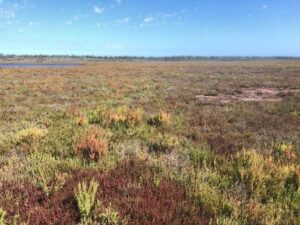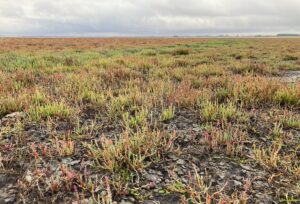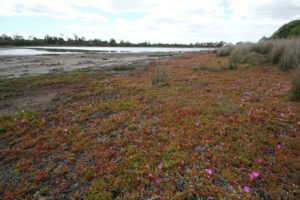In great news for the Gippsland Lakes, the most recent assessment of the condition of saltmarsh communities has shown them to be in ‘good to excellent’ condition.
The survey, undertaken by East Gippsland Catchment Management Authority, used a newly developed method which will be used to record the condition of this important habitat type over time in the Gippsland Lakes Ramsar site.
“We are delighted with these latest results showing that saltmarsh communities are doing well in the internationally renowned Gippsland Lakes Ramsar wetland,” said Bec Hemming, CEO of East Gippsland CMA.
“This success is largely dedicated to projects we have been delivering with our partners and community over many years to work together to understand, protect and restore these delicate ecosystems.”
“Saltmarsh is an incredibly important plant community for the Lakes as it provides habitat for fish and birds and is also one of the key indicators we use to measure the health of the ecosystem.”
Saltmarsh communities are nature’s buffer as they protect land from storm surges and bank erosion and, being tolerant to saline conditions, are likely to assist the Lakes in being more resilient from the impacts of climate change and sea level rise over time.
The Gippsland Lakes Ramsar Site was listed in 1982 and is one of twelve wetlands listed under the Ramsar Convention in Victoria and one of 64 wetlands areas in Australia. The Lakes are recognised for outstanding significant coastal wetland values and features, including vital habitat for up to 50,000 migratory and resident waterbirds as well as supporting other crucial ecosystem services including nationally and internationally threatened wetland species, waterbird breeding and fish spawning sites.
As the Ramsar Site Coordinator, East Gippsland CMA manages programs, such as this saltmarsh study, to monitor the health of the area and develop works to adapt to changes and protect and enhance key wetland values.
This is great news for the Lakes and the community and East Gippsland CMA asks everyone to continue to play their role in protecting saltmarsh.
“Because saltmarsh grows near or on the banks of the Gippsland Lakes, it can often be disturbed by recreational vehicle use. We want to encourage community to please stay on designated roads to protect our precious saltmarsh into the future,” Bec concluded.
This project is part of a $248 million investment over four years (2020-24) by the Victorian Government to improve the health of waterways and catchments. Of this, $7.5 million has been provided to deliver on-ground actions to implement priorities to improve the health of the Gippsland Lakes catchment.


